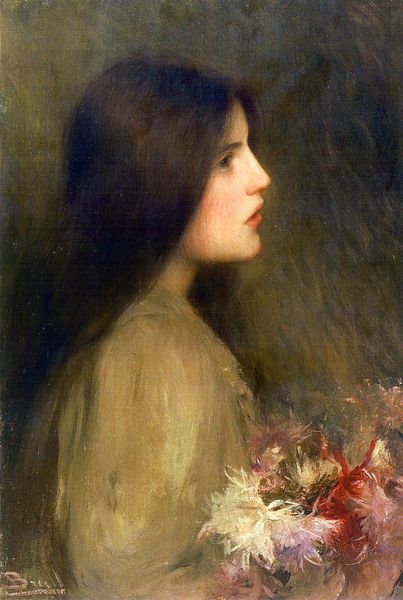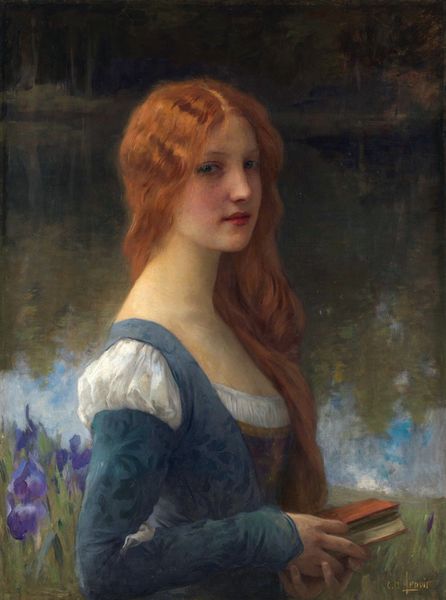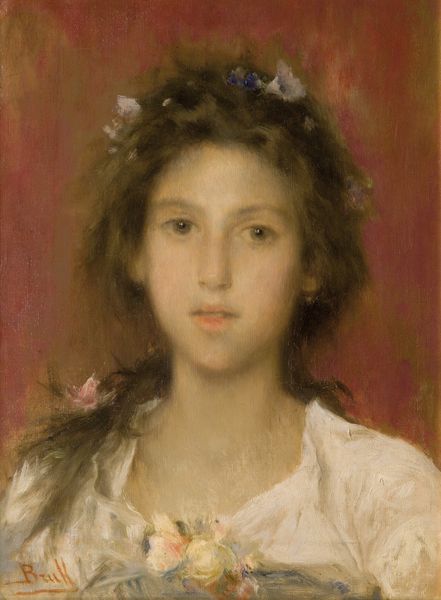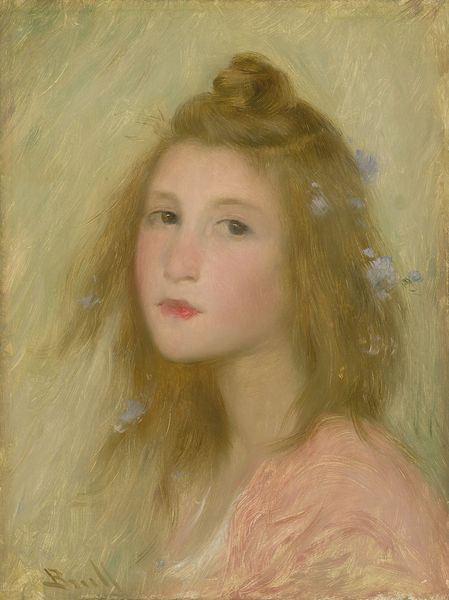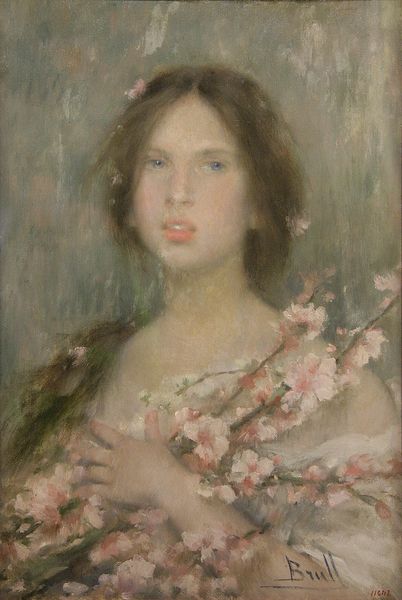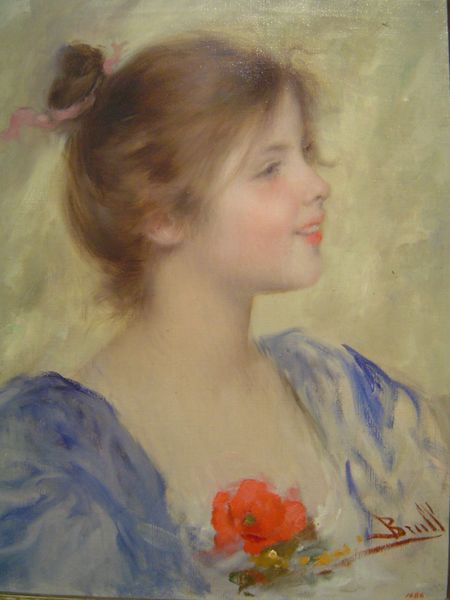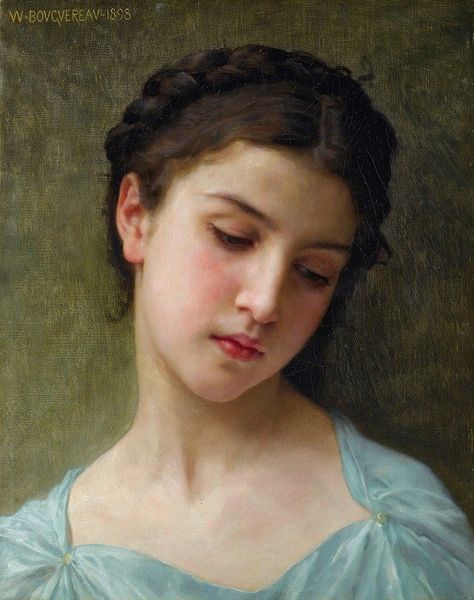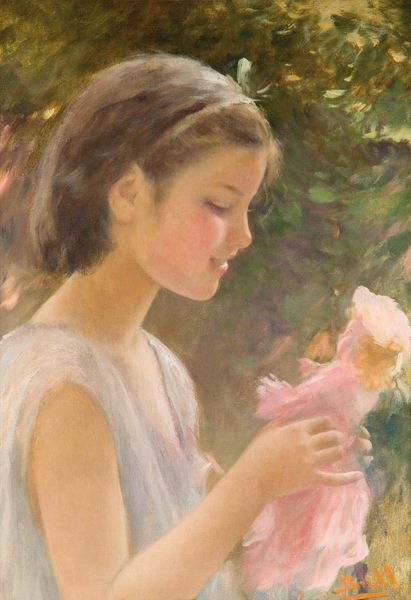
Copyright: Public domain
Curator: Here we have Joan Brull's oil painting, "Young Woman," created around 1901. Notice the textured canvas and how the light interacts with the brushstrokes. What strikes you initially? Artist: It feels like a whisper. A gentle, quiet moment caught in time. The colors are so soft, almost faded, like a memory. There’s something ethereal about her, the way she holds those flowers. It’s romantic, but not in a flashy way, more of a melancholy sweetness. Curator: Precisely. Let's consider the context. Brull, a Catalan artist, was working at a time of industrial expansion in Barcelona. Art Nouveau was flourishing, influencing not only the fine arts but also decorative arts and architecture. The pale palette and subtle brushwork hint at Impressionist influences trickling in. The painting itself, done in oils, was likely produced in a studio, a departure perhaps from painting en plein air, but it embraces certain themes common to landscapes. Artist: You know, seeing those muted tones, it makes me wonder about the pigments he used. Were they readily available? Were they costly? It adds a whole new layer of appreciation, imagining him mixing those colours, deciding just how much weight to give the brown and pale blues... How did his social sphere influence those decisions? I get a strong romantic and sensitive feel from the woman. Curator: Definitely. Access to materials shaped artistic production, just as much as artistic vision did. Furthermore, paintings like these became commodities themselves, entering the market economy and finding their way into private collections. Considering the rapid industrial growth around 1900, this can be interpreted as romantic rejection to industrial values, favoring natural environments with an emphasis in detail to natural entities, like flowers and beautiful serene-looking young woman in his artwork. The focus here is in its natural beauty instead of any commercial purpose. Artist: I hadn't really considered that before! I was mostly feeling the vulnerability. It’s such a fragile composition, barely there, as if she's about to fade back into the mist of the background... or even perhaps a social commentary to keep that delicate sensitivity, as something hard to catch that disappears in urbanised settings? Like an echo of a quieter time. Curator: That’s beautifully put. It reminds us that artworks are not only aesthetic objects but also products embedded in a specific social and economic fabric, reflecting the tensions and aspirations of their time. Artist: True. Thank you, with you it’s like the painting just unfolds another layer... it gains further more complex yet grounded depth of view that allows us to further appreciate his creation.
Comments
No comments
Be the first to comment and join the conversation on the ultimate creative platform.

